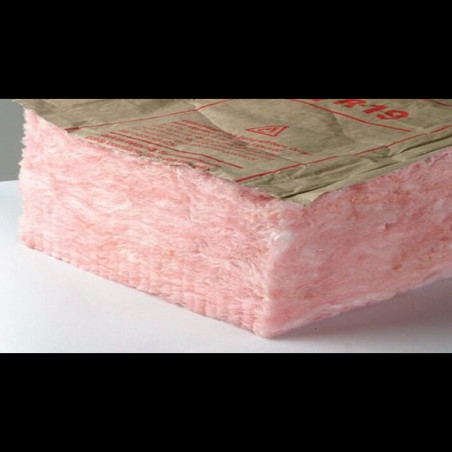

Fiberglass – which consists of extremely fine glass fibers – is an insulation material that is found in most homes.
It is commonly used in two different types of insulation, which are batts and rolls, and loose-fill. It is also available as rigid boards and duct insulation.
Currently, manufacturers produce medium- and high-density fiberglass batt insulation products that have a slightly higher R-Value than standard batts, according to the U.S. Department of Energy. Fiberglass can be placed in unfinished walls, floors, and ceilings. It is fitted between studs, joists, and beams.
Fiberglass is made to slow the spread of heat and cold in both residential and commercial insulation projects. Fiberglass makes for a good option for homeowners looking to save a few dollars or do the installation as a do-it-yourself project.
Fiberglass as an insulator slows the spread of heat, cold, and sound in structures.
The material does this by trapping pockets of air, keeping rooms warm in the winter and cooler in the summer, according to the International Association of Certified Home Inspectors (InterNACHI).
Limiting the amount of air coming into and leaking from a home can work to make a home comfortable. It's important to note that fiberglass limits the air movement, but doesn't stop it completely.
| PHYSICAL PROPPERTIES | TEST | VALUES |
| Nominal Thickness | - | 3" |
| Length | - | 100 ft |
| Wideth | - | 48" |
| Weight | - | 14 lbs/1000 sq.ft |
| Temperature Range | ASTM C411 | -50°F to 180°F" |
| Fire Rating (Surface Burning) | ASTM E84 / UL 723 | Flame spread index ˂ 25 Smoke developed index ˂ 50 |
| Thermal Resistance" | ASTM C 177/C 518 | R-10.0 to R-10.8 |
| Tensile Strength | ASTM C1136 | 35 LBS/INCH |
| Reflectivity | ASTM C523 | 0.85 |
| Water Vapour Permeability | ASTM E96 | 0.02 Perms |
| Resistance to Fungi & Bacteria | ASTM C665/C1338 | DOES NOT PROMOTE GROWTH |
Features:


